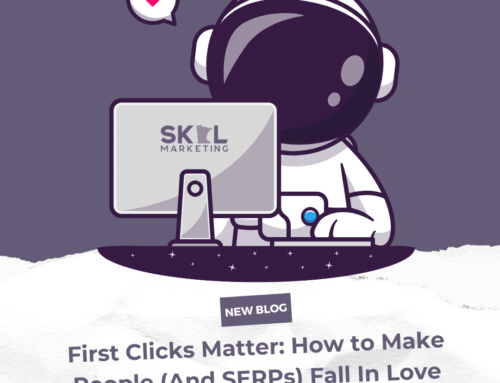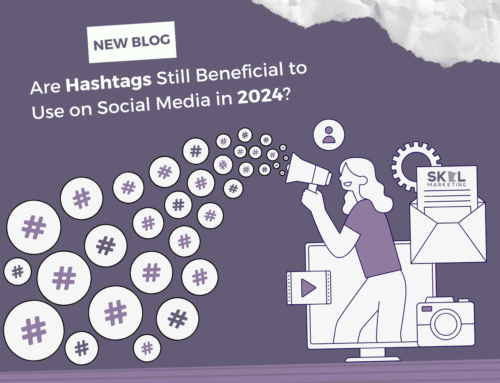It’s rare nowadays to find a small business owner who doesn’t want an “up to date” website–after all, for years now the marketing world has been beating the drum of the importance of good websites, and most businesses have seen the benefit with their own eyes. However, website building is a skill set all its own, and it can be understandably difficult for many people to define what they mean by an “up to date” website.
A site that doesn’t follow every 2022 website design trend may still be perfectly effective at driving business, while a beautiful modern-looking website could still be a disaster underneath the surface. Maintaining your website is vitally important, so what should you look for to decide if your site is out of date?
Old Web Content and Copy
If your website hasn’t been updated in years, it’s probably out of date! That may sound a bit obvious, but many businesses don’t keep the actual consumer-facing content of their website up to date, and that can cause issues both for site usability and Google search rankings (how high up your website appears in relevant Google searches).
In terms of site usability, imagine you’re a potential customer visiting your website. If the copyright date at the bottom of your site still shows 2017, your site copy still says “as we near the end of the 20-teens,” or your blog hasn’t been updated since who-knows-when, this erodes that user’s trust in your website. They’ll think to themselves, “what else might be outdated? Are all these services still active? Is this even the current address?” and questions like this can cause visitors to turn tail and find a company with the info they can be sure is accurate.
Google also includes site update recency amongst the factors in its search rank algorithm. If it seems that pages on your site haven’t been updated in a year or two, it too assumes that the info on those pages may not be accurate or verifiable, and will rank your site lower as a result.
A Site Not Designed for Mobile
Like it or not, your website needs to be accessible and usable on mobile devices. Over half of all web traffic worldwide comes from mobile devices as of the end of 2021, and this trend has held steady for a few years now. Our cell phones, tablets, and smart devices are simply part of how humanity navigates the internet now, and a site only designed to cater to desktop users simply isn’t enough in the modern world.
A mobile-friendly website is a site that’s designed from the ground up to load, look, and perform well on a mobile device, and can be a great start to ensure your company’s website is accessible to mobile users. However, the next step is a truly responsive website–responsive websites are those that actually change their appearance and layout depending on the device the visitor is using, meaning the same content shows up beautifully on an expansive desktop browser or a more restrictive mobile browser. If your website is neither mobile-friendly nor responsive, just know that you’re likely losing traffic from modern, mobile-heavy web users who can’t be bothered to navigate around a site not designed with them in mind.
Old-School Design Features
Earlier we mentioned that a site doesn’t have to conform to every single modern design aesthetic to be perfectly functional, and that’s true. However, there are particularly outdated design features and visual design languages that will instantly date your site in a way that turns off potential users and search algorithms.
Non-web-safe fonts, purposeless splash/entry pages, auto-playing sound or video, unnecessary animations or animated text, illogical or overly chaotic site layouts, and more are all design elements that are best left in the Web 1.0 days. In 2022, we recognize that users want streamlined sites that load quickly, show only the most important info up-front, don’t require any unnecessary clicks or taps to get where they want, and are accessible to those with vision, hearing, or mobility impairments.
Not only are these design elements considered unattractive or off-putting, but some are technically harmful or can literally break the user experience. For example, Flash no longer shows up on iPads and iPhones, so sites that use Flash elements will simply not load fully on these incredibly common devices. Or, sites with massive auto-playing video files that take forever to load can dampen search rankings. Not only do they make your site look unprofessional, but they make it less visible, too.
Slow Loading and Poor Performance
As we just hinted at, Google’s search algorithm now takes site loading speed into account when ranking websites. If your site utilizes old coding methods, excessively large file sizes, or other design traits that slow down how quickly your web page loads, then you’ll get docked in the search rankings, causing you to lose eyeballs, site visits, and potential leads. Not sure if your site uses these outdated tools, features, and design elements? That’s where we come in.
If you need some assistance in seeing if your website needs an update to help you stay competitive, Skol Marketing’s team is here to help. For one-on-one guidance, a comprehensive site audit, or to discuss how your website can be polished to perfection (or even rebuilt from the ground-up) please don’t hesitate to contact the web experts at Skol Marketing.





